Print out this picture and get creative with your coloring!!
Write you name on the picture and you can email it to us on charnewilhelmi1@gmail.com.
Then your creative coloring will be put on our website!
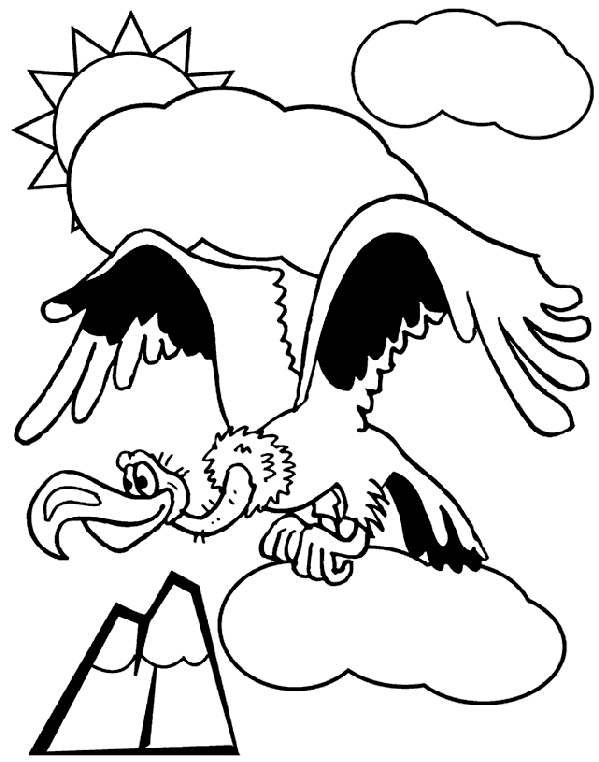
Colouring in pictures of different vulture species with associated information about the species.
Print out this picture and get creative with your coloring!!
Write you name on the picture and you can email it to us on charnewilhelmi1@gmail.com.
Then your creative coloring will be put on our website!

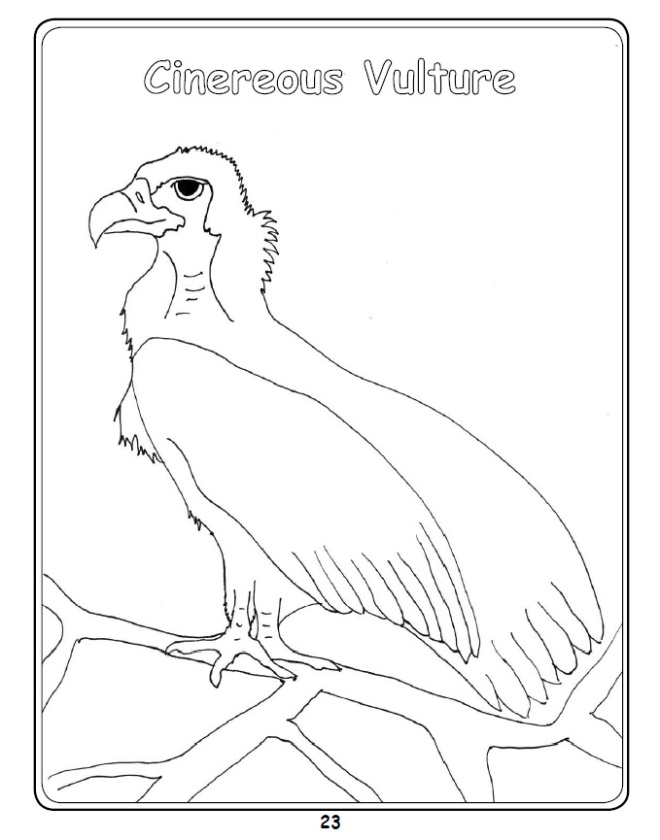
My scientific name is Aegypius monachus
What I look like
I am the largest African Vulture. As an adult I have a large grey bill, with a blue cere and gape. My head is covered with dark-brown feathers. Parts of my head and neck are naked. My bare parts are bluish grey. My eye is golden brown. My feet are pale yellow. I have broad wings and a short, slightly wedge-shaped tail. Overall, I have a dark-brown plumage.
Where I live
I am found in forested areas in hills and mountains, and also in scrub and grasslands. I nest in trees or on rocks, often near other vultures in loose colonies. I am found in Sudan. I am occasionally reported in Egypt, Morocco, and Tunisia.
What I eat
I look for food over many kinds of open terrain, including semi-forested areas, in mountains, and in expansive grasslands. My diet consists mainly of the carcasses of medium-sized and large mammals. I occasionally prey on snakes and insects.
Fun Fact
I am more migratory than most people think. Individuals of my species that breed in Mongolia, for example, migrate all the way to Korea in the winter.
My Conservation status
I am considered to be Near Threatened. I have a small population which continues to decline due to both poisoned bait put out to kill dogs and other predators, and to higher hygiene standards that reduce the amount of carrion available.
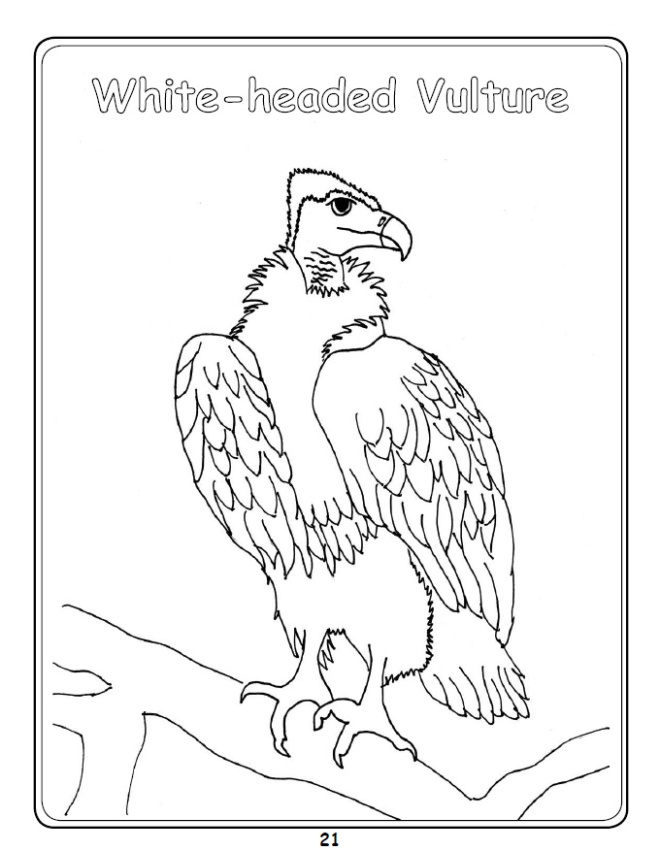
My scientific name is Trigonoceps occipitalis
What I look like
I am a medium-sized scavenger. As an adult I have a bright orange-red bill, pale blue cere, pale pink face and throat, and yellow eyes. I have a white crest. The featherless areas on my head are pale grey. My feet are bright pink. I have dark brown upper parts and black tail feathers. The feathers on my lower parts and legs are white.
Where I live
I build a stick nest in tall trees, and like to roost in tall trees near water. I lay one or two eggs that hatch after 56 days. I am found in open savanna and wooded country in thirty-seven African countries including, Angola, Benin, Botswana, Burkina Faso, Burundi, Cameroon, Central African Republic, Chad, Côte d’Ivoire, Congo, Djibouti, Eritrea, Ethiopia, Gabon, Gambia, Ghana, Guinea, Guinea Bissau, Kenya, Malawi, Mali, Mauritania, Mozambique, Namibia, Niger, Nigeria, Rwanda, Senegal, Somalia, South Africa, Sudan, Swaziland, Togo, Uganda, Tanzania, Zambia, and Zimbabwe.
What I eat
I lead a double life as both a scavenger and a predator. Sometimes I kill prey including small to medium-sized mammals, and locusts and other swarming insects. I also find and eat dead animals which I set out to find early in the morning.
Fun Fact
I am a generally solitary vulture that sometimes feeds on flamingo eggs.
My Conservation Status
As I am believed to be rarer than previously thought, and my conservation status was recently changed from Least Concern to Vulnerable. I face conservation concerns including decreasing populations of medium-sized mammals, habitat loss, indirect poisoning, human disturbance, and direct persecution. I also am killed for traditional medicine in South Africa.
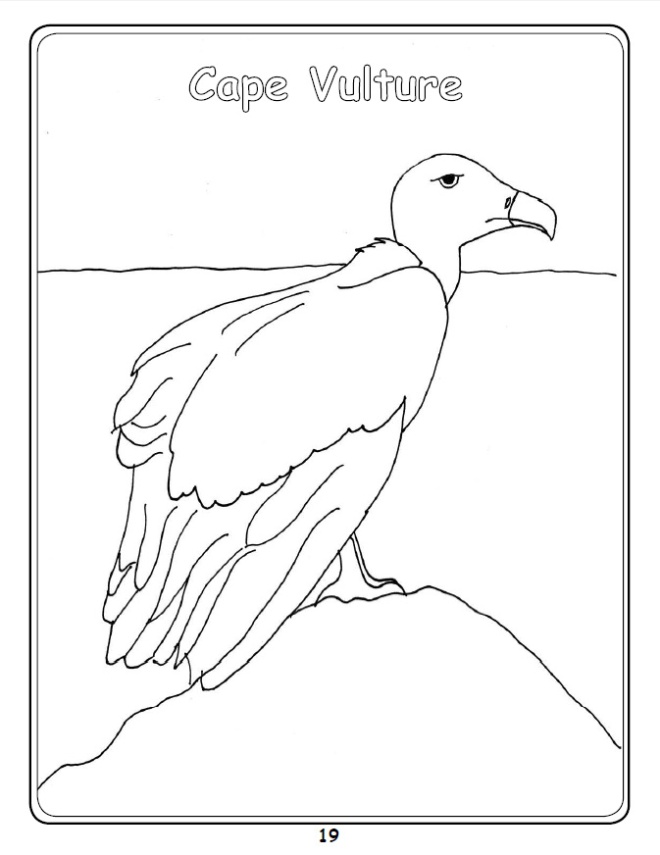
My scientific name is Gyps coprotheres
What I look like
I am a large vulture with a near-featherless head and neck. I am creamy-buff as an adult, with dark wing and tail feathers, and a pale buff neck-ruff. I have a yellowish eye, black bill, bluish throat and facial skin, and a dark neck. I am generally darker and more streaked when young, with brown to orange eyes, and a reddish neck.
Where I live
I nest on ledges on cliffs and usually lay one egg per year. I am found in five African countries including, Botswana, Lesotho, Mozambique, South Africa, and Zimbabwe. I also have been reported in Angola, the Democratic Republic of Congo, and Zambia. I have been extirpated from Namibia and Swaziland.
What I eat
I feed on carcasses of medium to large animals, mostly mammals from the size of Thompson gazelles (30-40kg) and larger.
Fun Fact
I breed farther south than any other African Vulture.
My Conservation Status
I am considered to be Vulnerable because I have a small population that appears to be declining. I am threatened by electrocution by power-lines, collisions with power-lines and vehicles, unintentional poisoning, food-stress during chick-rearing, direct persecution including killing for use in traditional medicines, and disturbance at colonies.
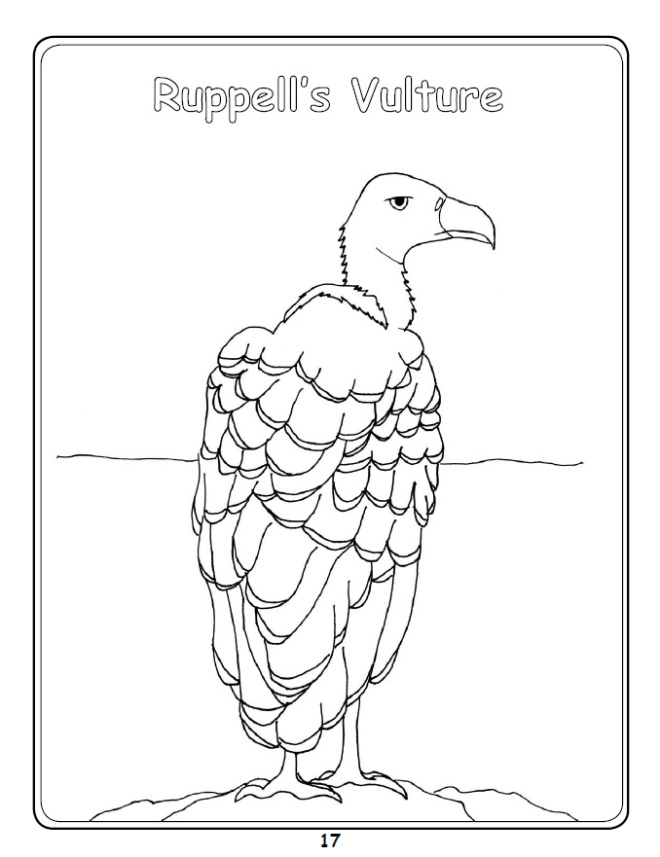
My scientific name is Gyps rueppellii
What I look like
I am a relatively large vulture, and hold the record for the world’s highest flying bird soaring nearly seven miles high. I have an overall grayish to blackish plumage with extensive pale creamy edging on my body feathers that makes me appear scaled or speckled. My wing and tail feathers are dark. I have a white neck ruff, greenish-grey neck, and pale, largely featherless head. I have a pale yellow eye and a strikingly yellowish-orange bill,
with a small black tip. My cere is black.
Where I live
I am found in dry open country on cliffs and gorges, that are normally essential for nesting and roosting. I almost always nest on ledges in cliffs, and generally avoid human settlements. I am found in twenty-six African countries including, Algeria, Benin, Burkina Faso, Burundi, Cameroon, Central African Republic, Chad, Côte d’Ivoire, Djibouti, Ethiopia, Gambia, Ghana, Guinea, Guinea-Bissau, Kenya, Mali, Mauritania, Niger, Nigeria, Rwanda, Senegal, Somalia, Sudan, Tanzania, Togo, and Uganda. I am occasionally reported in the Congo, Egypt, Sierra Leone, and Zambia.
What I eat
I feed on the carcasses of dead animals. I locate my food by sight, either by scanning the ground directly when soaring above it, or by watching the activities of other vultures searching for food. I have an especially powerful bill and, after the most attractive soft parts of a carcass have been consumed, I sometimes continue to feed on the hide and even the bones.
Fun Fact
Recently I have been recorded breeding in Spain.
My Conservation Status
I am less common than previously believed, and am now considered to be Near Threatened. Threats to my population include habitat loss through agricultural conversion, unintentional poisoning, nest disturbance, and direct persecution. I also am exploited for international trade in meat and medicine.
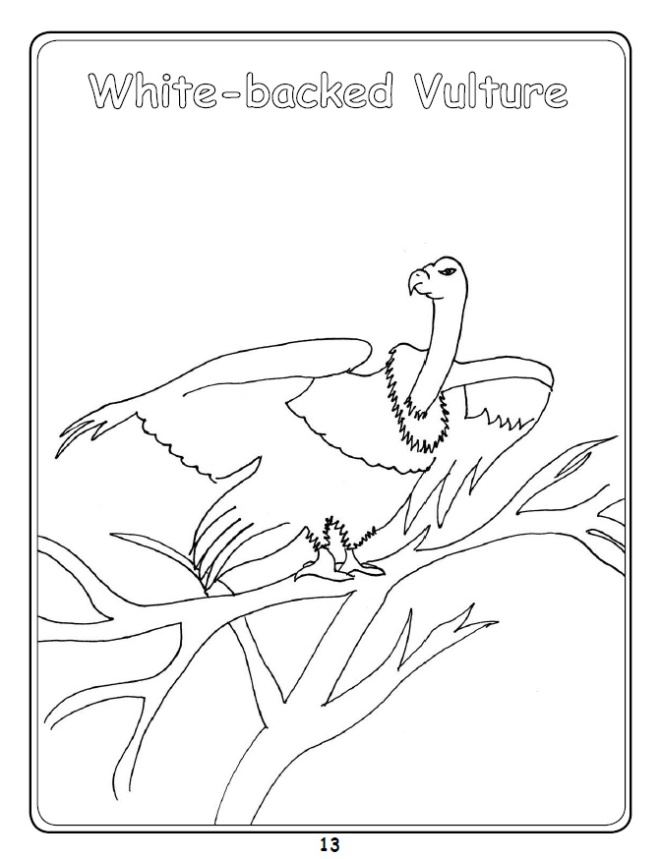
My scientific name is Gyps africanus
What I look like
I am a medium-sized vulture. As an adult my head is a wonderful mix of colours. My face is generally pink, but can flush to red when I am excited, including when I am feeding on a carcass with other vultures. My cere and gape are pale powder blue, and my bill is bright orange. I have blackish eyes and legs. I have a white rump patch and white neck ruff. My plumage is brownish to cream colored.
Where I live
I am a lowland species of open wooded savanna, and particularly enjoy Acacia trees. I nest in tall trees. I am social and gather with other vultures at large carcasses, as well as when flying in thermals and at night-time roosts. I am found in thirty-seven African countries including, Angola, Benin, Botswana, Burkina Faso, Burundi, Cameroon, Central African Republic, Chad, Congo, Côte d’Ivoire, Eritrea, Ethiopia, Gambia, Ghana, Guinea, Guinea-Bissau, Kenya, Malawi, Mali, Mauritania, Mozambique, Namibia, Niger, Nigeria, Rwanda, Senegal, Sierra Leone, Somalia, South Africa, Sudan, Swaziland, Tanzania, Togo, Uganda, Zambia, and Zimbabwe. I am occasionally reported in Liberia.
What I eat
I eat the intestines and soft flesh of large dead mammals. I cannot tear thick skin but my long bill and neck, and my narrow head allow me to plunge deep into carcasses at openings and wounds.
Fun Fact
I am very social and often feed together with dozens of other White-backed Vultures.
My Conservation Status
I am considered to be Near Threatened. My population has declined recently in parts of my range because of habitat loss, declines in populations of wild mammals, unintentional poisoning, and direct persecution. I also am hunted for trade in parts of Africa. In South Africa, for example, I am caught and consumed for perceived medicinal and psychological
benefits.